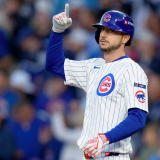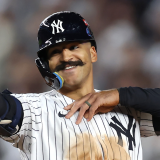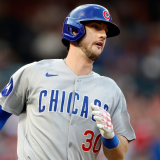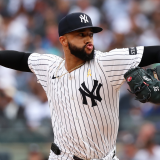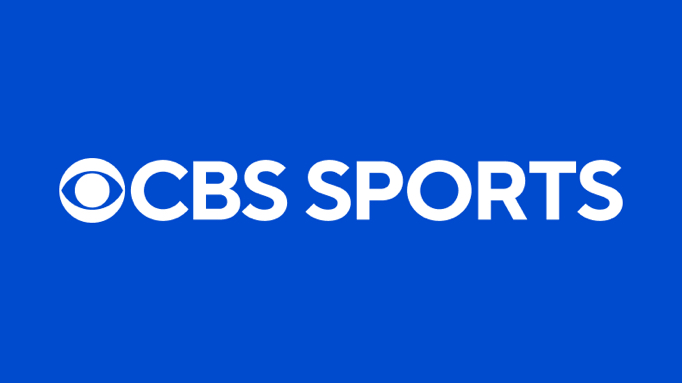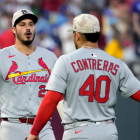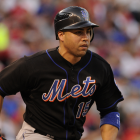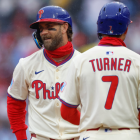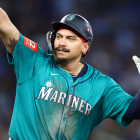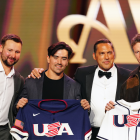
How aggressively will the Cardinals sell? Why St. Louis' trade chips could dictate the offseason
Nolan Arenado remains on the chopping block but Chaim Bloom seems poised to dig deeper this winter

The St. Louis Cardinals this offseason find themselves in unfamiliar straits. First, someone other than John Mozeliak is leading baseball operations in St. Louis for the first time since 2007. That's Chaim Bloom, who's now the president of baseball operations for the Cardinals. Second, the Cardinals, not far removed from a wildly successful two-decade stretch to begin the current century, have missed the playoffs for three straight years and have logged losing seasons in two of the last three years. Not since the late 1990s has the organization experienced such a low point.
That pair of unusual circumstances animates the offseason ahead for St. Louis. While what's happening with the Cardinals can't be described as a full-on rebuild -- at least not yet -- a further pivot toward a younger roster and an emphasis toward the long term will be the priority. If contention happens in 2026, then it will be accidental at some level. Bloom spent his first year conducting an audit of the organization while in an advisory role and his second year was devoted to rebuilding a player-development system that had fallen woefully behind the times, all with more investment in personnel and tech from an ownership group that had neglected that essential space for too long. Now Bloom occupies the big chair and he'll shape the roster for 2026 and beyond.
Unlike the other teams we've previewed going into the heart of the offseason, the Cardinals almost certainly aren't going to be big spenders on the free-agent market in the weeks and months to come. Instead, Bloom will likely target some mid-market rotation help, perhaps even a reclamation project or two on a short-term deal who could be flipped at the 2025 trade deadline. What will tell the story of the Cardinals' winter is the trades they make -- trades involving some big names.
In those trades to come, at least the ones that can command a meaningful return, Bloom is likely to target young, controllable pitchers who have the potential for swing-and-miss and the capacity to beat hitters in the strike zone. That's something the Cardinals broadly lack, at least in the majors and the upper rungs of the system outside of recent first-round draft pick Liam Doyle. Other, more complicated trades will be more about clearing space for younger contributors and shedding salary. With that background laid out, let's take a look at the most noteworthy names who may be on their way out of St. Louis this offseason.
Trade chips
Trading the 28-year-old Donovan, who's coming off his first All-Star selection, would clear infield space for top prospect JJ Wetherholt, who's in line to crack the 2026 Opening Day roster. Even more important, though, is that Donovan figures to be the Cardinals' most alluring trade piece and thus should get them the best return. That's heavy motivation for Bloom.
Donovan's best position is second base, where he's a plus, and he's also capable of multi-positional duty. He can man first, third, and left, and he's also able to cover shortstop in limited doses. He's also a quality hitter, as Donovan put up an OPS+ of 119 this past season, and that figure is right in line with his career mark of 117 across parts of four MLB campaigns. Furthermore, there's cause to believe he may have found a higher level with the bat in 2025. Through the end of May, Donovan boasted a wOBA (what's this?) of .373 and backed it up with xwOBA (what's this?) of .370. In June, though, an MRI on Donovan's ailing left toe turned up a sprained capsule in the joint. Donovan toughed it out, but the injury cascaded throughout his lower half, messed up his swing mechanics, and sapped his production. Absent that injury, Donovan may have been on his way to a career year at the plate, in terms of both top-line outputs and underlying indicators that suggested it was all sustainable. This won't be lost on teams interested in trading for him.
As well, Donovan comes with two full years of team control -- meaning he's not eligible for free agency until after the 2027 season -- and contenders making such deals of course covet multiple years of control. All of this is to say, Donovan should be quite in demand, and his capacity to be a regular at the premium position of second base or fill a "Swiss army knife" role means he's a theoretical fit for almost any roster.
The 34-year-old Arenado seems to be well into his decline phase with the bat, but he's still a quality defender at the hot corner. The Cardinals have been looking to move Arenado for some time -- Arenado somewhat surprisingly blocked a deal to the Astros last offseason -- and those efforts will continue under Bloom. Two factors make it more likely that an Arenado trade happens this time around. One, ownership, the DeWitts, appear willing to include more cash this time around, which makes Arenado's contract more palatable. Two, Arenado, who has a full no-trade clause, has indicated he's willing to expand his list of acceptable destinations to include more teams.
On the contract front, Arenado is owed $27 million for 2026 with $5 million being covered by his former team, the Rockies. For 2027, he's under contract for $15 million. That's a balance due of $37 million before the Cardinals kick in what should be a significant chunk (it may take more than half of said balance due to make a trade happen). For the Cardinals, the motivation is not only clearing a bit of payroll in the trade but also opening up third base for, most likely, Nolan Gorman to have everyday duty and settle in at his natural position. This, of course, assumes that Bloom sees Gorman as a long-term contributor and doesn't trade him over the winter.
Arenado as noted remains a defensive asset, but the bat is waning. In the right lineup -- meaning one that's otherwise strong -- he can be a passable bottom-of-the-lineup bat or, if he's willing to accept such a role, the light half of a platoon and a late-inning defensive sub. Over the course of a full and generally healthy season (not to be assumed, of course), Arenado can still put up a WAR in the twos, and that kind of player is tradable depending upon, again, how much cash the Cardinals are willing to include.
Gray, who recently turned 36, also has a full no-trade clause, but more recently he's suggested he's willing to waive it for the right set of circumstances, which wasn't the case last winter.
On a performance level, he'll have a market. In 2024, he was one of the rare starting pitchers to strike out more than 30% of opposing batters, and this past season he topped 180 innings with an FIP of 3.39 and an NL-leading K/BB ratio of 5.29. Stated another way, Gray projects better than the 4.28 ERA he put up in 2025. He's owed a hefty sum -- $35 million for 2026 with a $30 million team option/$5 million buyout for 2027 -- but that short-term commitment may be appealing in light of the possible owner-implemented lockout after next season. The Cardinals may also be willing to include a modest amount of cash in order to improve their return in any Gray swap. This is a "only if the price is right" type of trade for Bloom, as the Cardinals could use his strikeouts and innings in the rotation even if contention isn't the aim.
This isn't an exhaustive list of deals Bloom and the Cardinals might make this winter. Lefty reliever JoJo Romero may get moved. Outfielder Lars Nootbaar still has good quality-of-contact measures, but his unexpected offseason surgery on both feet may complicate any trade aspirations on the part of the Cardinals. Willson Contreras' power and batted-ball metrics (plus his ability to man catcher on a part-time basis, provided he's willing to don the tools of ignorance again) would theoretically put him in play, but thus far he's not been inclined to waive his no-trade protection. Maybe that changes if a deeper teardown indeed takes hold during the front half of the offseason. Elsewhere, there's a lot of catcher depth in St. Louis and in the upper levels of the system and that logjam may be eased via trade. Iván Herrera and his special bat won't be going anywhere and the organization wants to see whether winter elbow surgery improves his arm strength and ability to control the running game. Defensive specialist Pedro Pagés seems like a candidate to be dealt and there could be similar discussions about Jimmy Crooks or Yohel Pozo, provided the latter isn't non-tendered.
Speaking of all this, some action could happen relatively soon, as Bloom and the Cardinals are facing something of a 40-man roster crunch this winter and have a number of names they'd like to protect before the Rule 5 Draft in December. Trades involving players already on the 40 is one path to addressing that. Mostly, though, this figures to be a methodical reading of markets and evaluating potential returns by Bloom and the rest of his growing stable of advisors. Whom the Cardinals do and do not trade this winter will have bearing on how other trades and even free-agent signings play out this winter. The Cardinals won't grab most of the headlines to come, but they will inform many of those headlines with the decisions they make.






